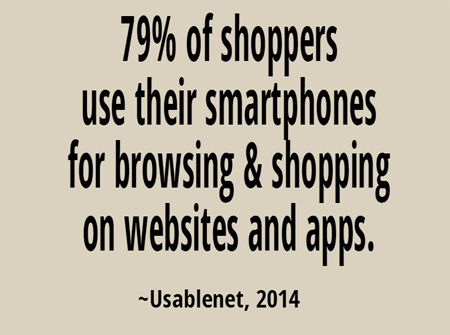A Trend-Free User Experience Checklist

No one is safe from fads. If they were, nobody would have worn parachute pants in the 1980s.
Over the years, Internet professionals have also been tempted to adhere to trends, but that isn't always the best course of action.
"Today, we know Flash is bad for the user experience, but at the time, everyone had to use it," said Chris Goward, founder of WiderFunnel. "It was the new sexy thing to put on your website and these trends continue today. We have social media icons everywhere. Is that really what you want the person to do or is it because everyone has them?"
Providing Web visitors with a good user experience - one that is frictionless and purposeful from start to finish - is about doing what is most effective regardless of industry norms. Let this trend-free user experience checklist be your guide now and in the future.
Fast Website
Internet professionals would be hard pressed to find a time when page speed didn't matter - either to the users or the search engines. Small business owners should aim for their Web pages to load in three seconds or less (the widely accepted benchmark).
To see where their websites stand, small business owners can use InternetSupervision.com, a free tool that shows how fast (or possibly how slow) a website loads around the world. Once a Web worker has determined their website's average page speed, consider using tools from Pingdom or Zoompf to identify other areas that could be slowing the website down.
For further reading, check out "Don't Be Late to the Loading Party" at wsm.co/loadingparty.
Device Compatible
 Seventy-nine percent of U.S. shoppers use their smartphone for browsing and shopping on websites and apps, according to 2014 data from Usablenet. When a company fails to provide an experience that is optimized for the devices customers are using, they risk lost sales, a damaged reputation and, worse, risking never having the opportunity to win back shoppers who left because the site was too difficult to use on their devices.
Seventy-nine percent of U.S. shoppers use their smartphone for browsing and shopping on websites and apps, according to 2014 data from Usablenet. When a company fails to provide an experience that is optimized for the devices customers are using, they risk lost sales, a damaged reputation and, worse, risking never having the opportunity to win back shoppers who left because the site was too difficult to use on their devices.
Smartphones and tablets won't be the go-to devices forever, but providing the optimal experience regardless of a user's device will serve businesses well for years.
For additional reading, check out, "The Great Design Debate: Responsive or Optimized?" at wsm.co/optresp.
Learn the secrets of testing your way to a better website experience with these tips from Chris Goward of Wider-Funnel at wsm.co/redesigndos.
Clear Navigation
Website users need virtual roadmaps - including navigation menus and calls-to-action - to know where they should go, where they are in the grander hierarchy of the site and what's important on a page. A variety of tools exist to help designers and marketers streamline a site's navigation - most notably, heatmaps, which allow them to get a comprehensive, visual representation of what their website visitors are looking at and focusing on. This empowers decision-makers to make better navigation choices. Some popular solutions on the market (for a quick list, go to wsm.co/4hmaps) show every spot where visitors click on a page, whether it's a link, image, text or dead space.
"This data enables businesses to discover obstructions in their conversion funnels by showing what links aren't getting enough clicks, and which calls-to-action are being ignored," said David-Dror Davidoff, chief revenue officer, Click-Tale. "Other types of heatmaps show how far down the page visitors generally scroll and what content they care most about, allowing businesses to tailor their content to suit their visitors' interests and reduce abandonment rates." See four must-see navigation styles at wsm.co/4uxnav.
The majority of website visitors are unforgiving. They make harsh decisions (like the decision to leave a site) quickly. Anything that confuses them, distracts them or makes them feel uncomfortable gives them a reason not to convert. Although basic, there will always be a need for speed, device compatibility and showing users where to go and what's important - regardless of what trends are lurking around the corner.
Read More

Subscribe to Our Newsletter!
Latest in Marketing








